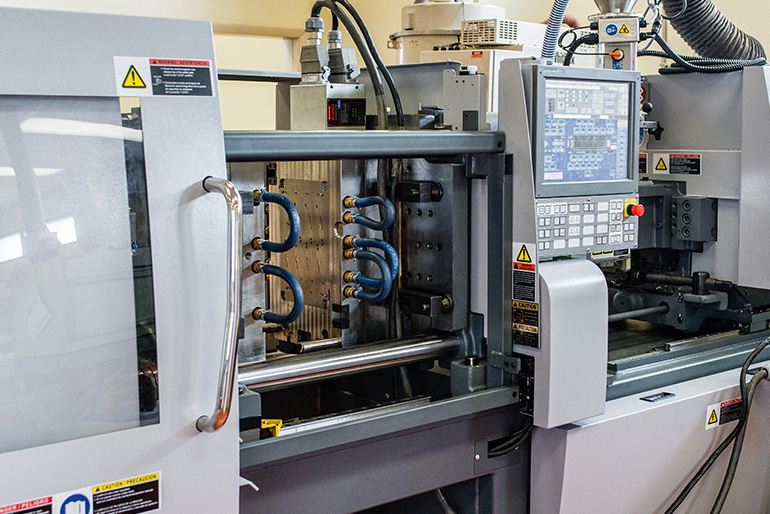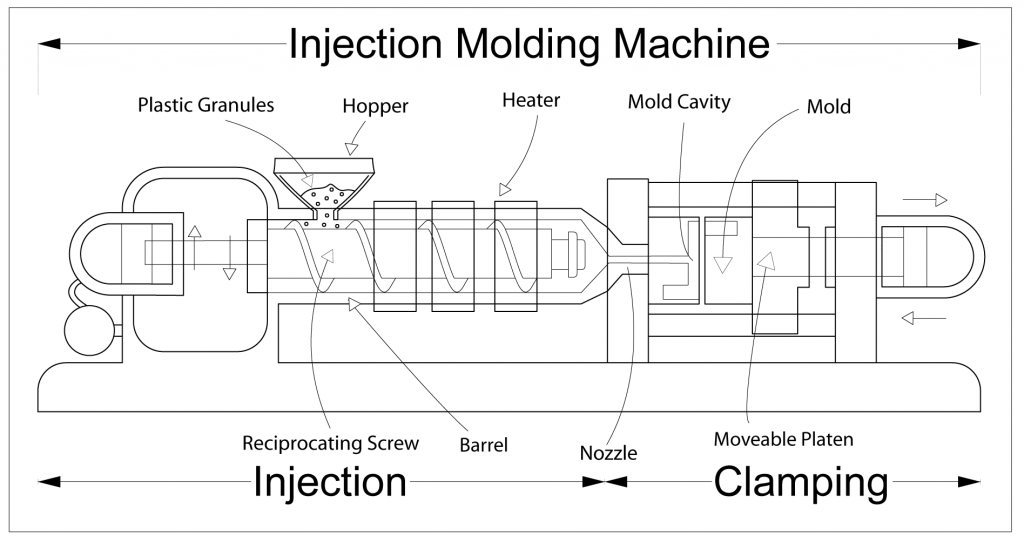The Effect of Plastic Injection Molding on Decreasing Production Costs and Waste
The Effect of Plastic Injection Molding on Decreasing Production Costs and Waste
Blog Article
The Future of Plastic Injection Molding: Innovations and trends to Watch
As the plastic injection molding market progresses, a number of key patterns are emerging that pledge to improve its landscape. Automation and wise manufacturing techniques are readied to improve productivity, while the change towards sustainable products mirrors a growing ecological consciousness. Moreover, advancements in 3D printing are leading the way for extraordinary design versatility. These technologies additionally bring forth difficulties that require mindful consideration. Comprehending exactly how these components will certainly connect and affect future techniques is critical for stakeholders seeking to navigate this transformative period efficiently.
Automation and Smart Manufacturing
As the plastic injection molding industry progresses, automation and clever manufacturing are taking spotlight, changing production processes - Plastic Injection Molding. The combination of sophisticated innovations such as robotics, IoT (Web of Points), and artificial knowledge is making it possible for producers to improve effectiveness, lower functional costs, and boost item quality. Automated systems streamline process, lessening hands-on intervention and raising throughput, which is essential in satisfying the rising need for fast production cycles
Smart manufacturing modern technologies facilitate real-time surveillance and data analysis, permitting firms to enhance maker efficiency and forecast upkeep demands. This proactive approach not just decreases downtime however also expands the life expectancy of devices. The usage of collaborative robotics, or cobots, enhances the versatility of production lines, allowing machines and workers to operate side by side safely and effectively.
The adoption of automation in plastic shot molding is not simply a fad yet a strategic crucial for organizations aiming to stay affordable in an international market. By harnessing these modern technologies, manufacturers can attain higher accuracy, reduce waste, and adjust swiftly to transforming client demands, placing themselves for sustainable development in an increasingly automatic future.
Lasting Materials and Practices
The press in the direction of automation and smart production has actually led the way for a higher focus on lasting products and techniques within the plastic shot molding market. Firms are significantly seeking environment-friendly options to typical petroleum-based plastics, leading to the adoption of recycled and bio-based products. These lasting products not only reduce ecological impact however additionally straighten with customer demand for greener items.

Moreover, partnership between producers, product suppliers, and ecological organizations is promoting development in the growth of lasting materials that satisfy performance requirements without compromising top quality. As regulations around plastic use come to be more stringent, the industry is positioned to adapt by embracing these lasting methods, making certain long-lasting viability and decreasing dependence on non-renewable sources. The combination of sustainability into plastic shot molding is not simply a pattern; it is becoming an essential element of corporate obligation and functional quality.
Advances in 3D Printing
Current developments in 3D printing innovation are significantly transforming the landscape of plastic injection molding. The assimilation of additive manufacturing processes permits for the fast prototyping of complex geometries that were difficult or once difficult to attain via conventional approaches - Plastic Injection Molding. This capacity not only speeds up item advancement cycles yet likewise decreases product waste, straightening with the expanding need for sustainable manufacturing techniques
Moreover, the introduction of hybrid manufacturing strategies, which combine 3D printing and shot molding, uses producers the capability to produce intricate styles while keeping the performance of automation. This approach enables the manufacturing of personalized parts customized to details consumer needs without compromising the speed and scalability that shot molding provides.
Furthermore, innovations in products, such as high-performance polymers and composites specifically developed for 3D printing, are improving the useful capabilities of published parts. These materials can withstand higher stress and anxiety read and display enhanced thermal residential properties, making them appropriate for even more demanding applications.
As 3D printing continues to develop, its combination right into plastic injection molding procedures promises to enhance productivity, lower expenses, and foster advancement in product design, positioning makers to better fulfill the obstacles of an open market.
Information Analytics and IoT Combination
Information analytics and the assimilation of the Net of Points (IoT) are changing plastic shot molding by giving suppliers with extraordinary understandings into their operations. By leveraging real-time data accumulated from interconnected equipments and sensing units, makers can keep an eye on performance metrics, identify inadequacies, and maximize manufacturing processes. This data-driven approach facilitates anticipating maintenance, decreasing downtime and extending tools life expectancy.
Additionally, IoT integration enables improved quality assurance. By continuously tracking variables such as cycle, temperature level, and pressure times, producers can promptly detect variances from established criteria and make modifications in real time. This not just enhances item consistency yet likewise decreases waste and scrap prices.
The combination of information analytics and IoT innovations additionally equips suppliers to embrace even more nimble manufacturing techniques. With accessibility to comprehensive information analytics, companies can respond to market needs with greater versatility, adjusting production timetables and configurations as needed. This flexibility is vital in a swiftly changing manufacturing landscape.

Customization and Design Flexibility
How can customization and design flexibility enhance the competitiveness of plastic injection molding? In an increasingly varied market, the capacity to supply customized options is vital. Modification enables makers to satisfy particular client demands, suiting one-of-a-kind measurements, shapes, and functionalities that standard products might not meet. This flexibility not just promotes client loyalty yet likewise opens avenues for brand-new service chances across numerous markets, from automobile to consumer items.
Advancements in style technologies, such as computer-aided layout (CAD) and rapid prototyping, more bolster this fad. These tools make it possible for designers to produce elaborate patterns and intricate geometries, which can be seamlessly incorporated right into the production procedure. As a result, makers can respond quickly to transforming consumer preferences and market needs.
Moreover, the application of modular tooling systems boosts style adaptability, enabling quicker modifications in between various product styles without considerable downtime. This adaptability can result in lowered lead times and lower production prices, making firms more nimble and affordable. Ultimately, accepting modification and layout flexibility in plastic continue reading this injection molding not only raises item offerings yet additionally strengthens market positioning in an ever-evolving landscape.
Conclusion
The future of plastic shot molding is defined by considerable developments in automation, sustainable techniques, and cutting-edge products. Personalization through modular tooling and rapid prototyping will certainly allow producers to remain responsive and competitive to the vibrant needs of the market.

The future of plastic injection molding is characterized by considerable improvements in automation, lasting techniques, and innovative materials.
Report this page